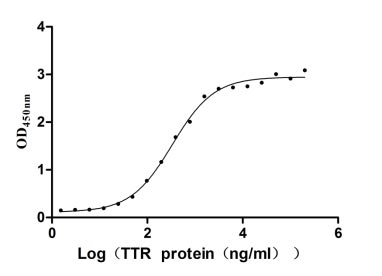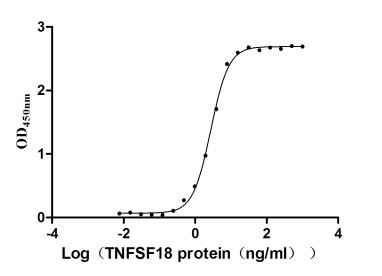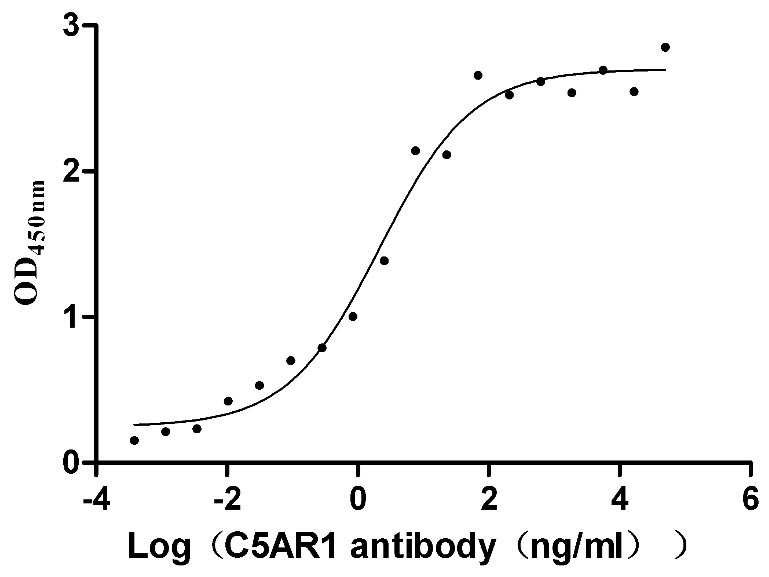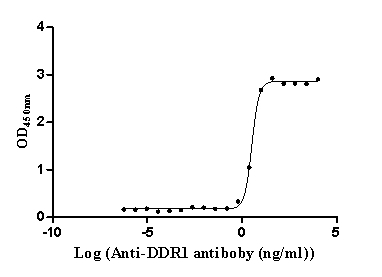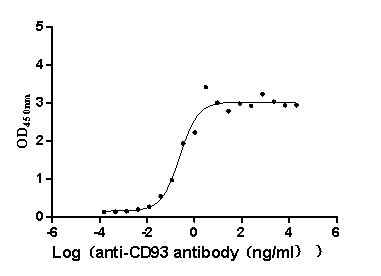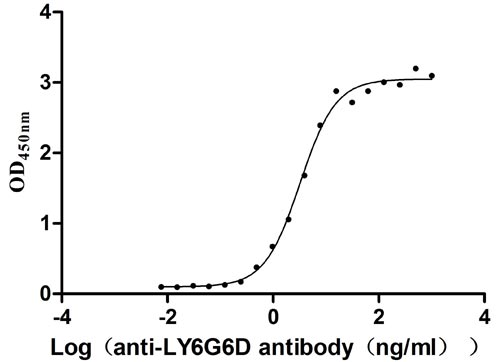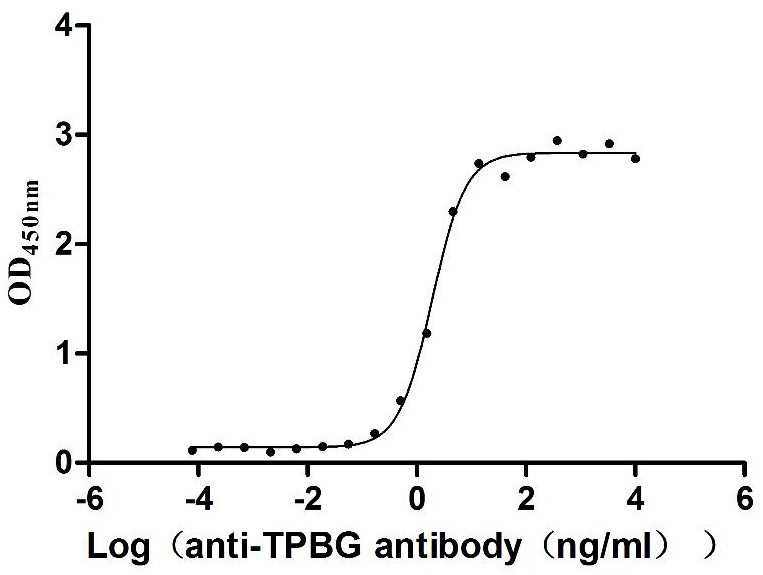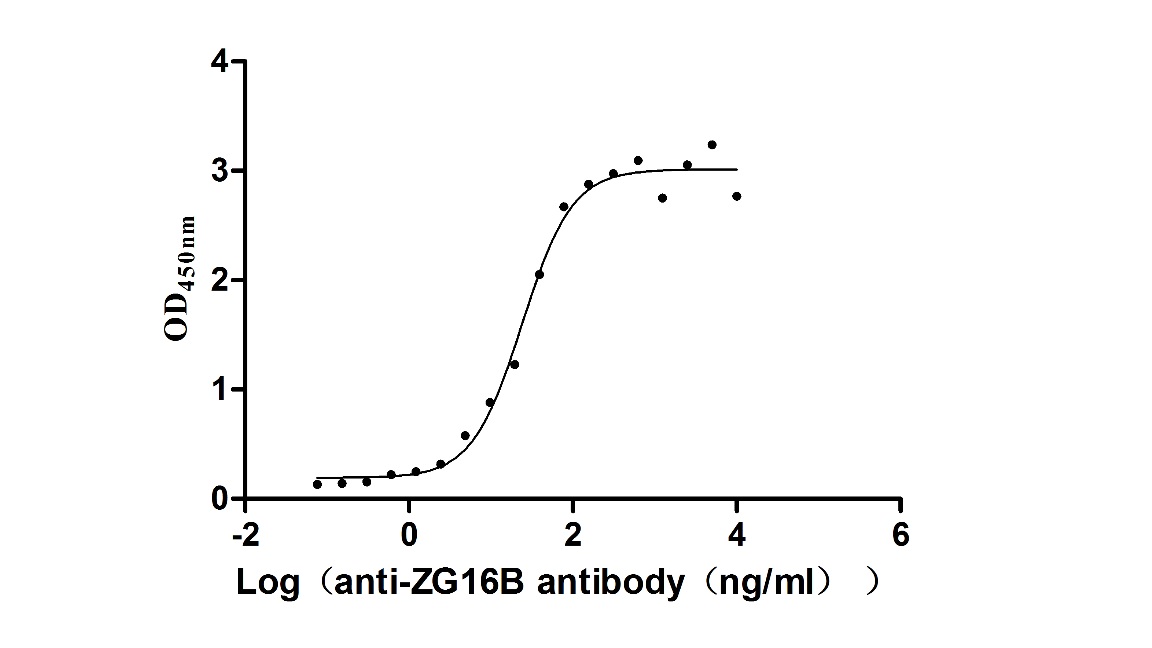Recombinant Rat Creatine kinase B-type (Ckb)
-
中文名称:Recombinant Rat Creatine kinase B-type(Ckb)
-
货号:CSB-YP005455RA
-
规格:
-
来源:Yeast
-
其他:
-
中文名称:Recombinant Rat Creatine kinase B-type(Ckb)
-
货号:CSB-EP005455RA
-
规格:
-
来源:E.coli
-
其他:
-
中文名称:Recombinant Rat Creatine kinase B-type(Ckb)
-
货号:CSB-EP005455RA-B
-
规格:
-
来源:E.coli
-
共轭:Avi-tag Biotinylated
E. coli biotin ligase (BirA) is highly specific in covalently attaching biotin to the 15 amino acid AviTag peptide. This recombinant protein was biotinylated in vivo by AviTag-BirA technology, which method is BriA catalyzes amide linkage between the biotin and the specific lysine of the AviTag.
-
其他:
-
中文名称:Recombinant Rat Creatine kinase B-type(Ckb)
-
货号:CSB-BP005455RA
-
规格:
-
来源:Baculovirus
-
其他:
-
中文名称:Recombinant Rat Creatine kinase B-type(Ckb)
-
货号:CSB-MP005455RA
-
规格:
-
来源:Mammalian cell
-
其他:
产品详情
-
纯度:>85% (SDS-PAGE)
-
基因名:Ckb
-
Uniprot No.:
-
别名:Ckb; Ckbb; Creatine kinase B-type; EC 2.7.3.2; B-CK; Creatine kinase B chain; Creatine phosphokinase M-type; CPK-B
-
种属:Rattus norvegicus (Rat)
-
蛋白长度:Full Length of Mature Protein
-
表达区域:2-381
-
氨基酸序列PFSNSHNTQ KLRFPAEDEF PDLSSHNNHM AKVLTPELYA ELRAKCTPSG FTLDDAIQTG VDNPGHPYIM TVGAVAGDEE SYDVFKDLFD PIIEDRHGGY QPSDEHKTDL NPDNLQGGDD LDPNYVLSSR VRTGRSIRGF CLPPHCSRGE RRAIEKLAVE ALSSLDGDLS GRYYALKSMT EAEQQQLIDD HFLFDKPVSP LLLASGMARD WPDARGIWHN DNKTFLVWIN EEDHLRVISM QKGGNMKEVF TRFCTGLTQI ETLFKSKNYE FMWNPHLGYI LTCPSNLGTG LRAGVHIKLP HLGKHEKFSE VLKRLRLQKR GTGGVDTAAV GGVFDVSNAD RLGFSEVELV QMVVDGVKLL IEMEQRLEQG QPIDDLMPAQ K
-
蛋白标签:Tag type will be determined during the manufacturing process.
The tag type will be determined during production process. If you have specified tag type, please tell us and we will develop the specified tag preferentially. -
产品提供形式:Lyophilized powder
Note: We will preferentially ship the format that we have in stock, however, if you have any special requirement for the format, please remark your requirement when placing the order, we will prepare according to your demand. -
复溶:We recommend that this vial be briefly centrifuged prior to opening to bring the contents to the bottom. Please reconstitute protein in deionized sterile water to a concentration of 0.1-1.0 mg/mL.We recommend to add 5-50% of glycerol (final concentration) and aliquot for long-term storage at -20℃/-80℃. Our default final concentration of glycerol is 50%. Customers could use it as reference.
-
储存条件:Store at -20°C/-80°C upon receipt, aliquoting is necessary for mutiple use. Avoid repeated freeze-thaw cycles.
-
保质期:The shelf life is related to many factors, storage state, buffer ingredients, storage temperature and the stability of the protein itself.
Generally, the shelf life of liquid form is 6 months at -20°C/-80°C. The shelf life of lyophilized form is 12 months at -20°C/-80°C. -
货期:Delivery time may differ from different purchasing way or location, please kindly consult your local distributors for specific delivery time.Note: All of our proteins are default shipped with normal blue ice packs, if you request to ship with dry ice, please communicate with us in advance and extra fees will be charged.
-
注意事项:Repeated freezing and thawing is not recommended. Store working aliquots at 4°C for up to one week.
-
Datasheet :Please contact us to get it.
靶点详情
-
功能:Reversibly catalyzes the transfer of phosphate between ATP and various phosphogens (e.g. creatine phosphate). Creatine kinase isoenzymes play a central role in energy transduction in tissues with large, fluctuating energy demands, such as skeletal muscle, heart, brain and spermatozoa. Acts as a key regulator of adaptive thermogenesis as part of the futile creatine cycle: localizes to the mitochondria of thermogenic fat cells and acts by mediating phosphorylation of creatine to initiate a futile cycle of creatine phosphorylation and dephosphorylation. During the futile creatine cycle, creatine and N-phosphocreatine are in a futile cycle, which dissipates the high energy charge of N-phosphocreatine as heat without performing any mechanical or chemical work.
-
基因功能参考文献:
- These results indicate that Hpca associates with BB-CK and that together they translocate to membrane compartments in a Ca(2+)-dependent manner. PMID: 23142228
- The expression of CK in cochlear tissues during development may reflect differential requirements for creatine-phosphocreatine buffering to replenish ATP consumed during energy-dependent metabolic processes. PMID: 22307408
- The increase in CKB protein during cerebellar postnatal development was coincident with that of the ubiquitous mitochondrial CK protein and mRNA, indicating that a phosphocreatine energy shuttle probably exists for ATP regeneration in the cerebellum. PMID: 12093362
- an interaction between KCC2 and brain-type creatine kinase was detected in cultured cells and brain extracts, which might contribute to KCC2-mediated modulation of Cl(-) homeostasis PMID: 15094054
- CKBB, an energy transduction enzyme, binds to the RNA of the 3'UTR of the faster ATP consuming alphaMyHC. PMID: 15548869
- In the cellular micro-environment, brain-type creatine kinase activates the KCC2 function. PMID: 16336223
- Although it is difficult to extrapolate our findings to the human condition, the inhibition of brain CK activity after renal failure may be associated to neuronal loss and may be involved in the pathogenesis of uremic encephalopathy. PMID: 18304734
- Creatin kinase inhibition caused by cystine released from lysosomes could be one of the mechanisms of tissue damage in patients with cystinosis. PMID: 18418703
- Total and cytosolic creatine kinase activities were significantly inhibited by Lys. The inhibitory effect of Lys on total cysteine kinase activity was totally prevented by reduced glutathione. PMID: 19370404
- Results suggest that the inhibition of brain creatine kinase activity may be involved in the pathogenesis of pneumococcal meningitis. PMID: 19409453
- report the identity of a 45 kDa imidazoline binding protein to be brain creatine kinase and this enzyme possesses an I2 binding site; findings will undoubtedly contribute to greater understanding of and development of imidazoline therapeutic drugs. PMID: 19410564
显示更多
收起更多
-
亚细胞定位:Cytoplasm, cytosol. Mitochondrion.
-
蛋白家族:ATP:guanido phosphotransferase family
-
组织特异性:In the kidney localized primarily in the outer medulla in the thick ascending limb and distal convoluted tubule.
-
数据库链接:
Most popular with customers
-
Recombinant Human Transthyretin (TTR) (Active)
Express system: Mammalian cell
Species: Homo sapiens (Human)
-
Recombinant Human Tumor necrosis factor ligand superfamily member 18 (TNFSF18), partial (Active)
Express system: Mammalian cell
Species: Homo sapiens (Human)
-
Recombinant Human C5a anaphylatoxin chemotactic receptor 1 (C5AR1)-VLPs (Active)
Express system: Mammalian cell
Species: Homo sapiens (Human)
-
Recombinant Human Epithelial discoidin domain-containing receptor 1 (DDR1), partial (Active)
Express system: Mammalian cell
Species: Homo sapiens (Human)
-
Recombinant Macaca fascicularis CD93 molecule (CD93), partial (Active)
Express system: Mammalian cell
Species: Macaca fascicularis (Crab-eating macaque) (Cynomolgus monkey)
-
Recombinant Human Lymphocyte antigen 6 complex locus protein G6d (LY6G6D) (Active)
Express system: Yeast
Species: Homo sapiens (Human)
-
Recombinant Macaca fascicularis Trophoblast glycoprotein (TPBG), partial (Active)
Express system: Mammalian cell
Species: Macaca fascicularis (Crab-eating macaque) (Cynomolgus monkey)
-
Recombinant Macaca fascicularis zymogen granule protein 16 homolog B (ZG16B) (Active)
Express system: Mammalian cell
Species: Macaca fascicularis (Crab-eating macaque) (Cynomolgus monkey)


